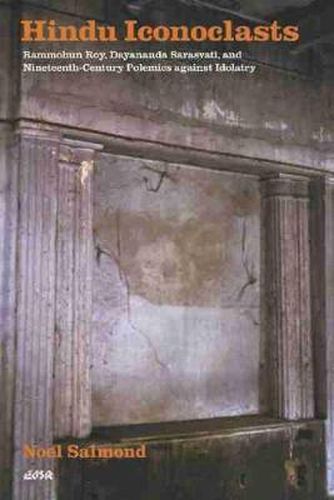Readings Newsletter
Become a Readings Member to make your shopping experience even easier.
Sign in or sign up for free!
You’re not far away from qualifying for FREE standard shipping within Australia
You’ve qualified for FREE standard shipping within Australia
The cart is loading…






Rammohun Roy (1772-1833) and Dayananda Sarasvati (1824-1883) are two of the best-known nineteenth-century Hindu reformers. Despite radically different backgrounds, both wrote scathing attacks on the practice of image worship, which they scorned as ‘idolatry’ - the fount, in their estimation, of all that was going wrong in India. They were Hindu iconoclasts. This presents an apparent anomaly - the denunciation of images is not typically associated with Hinduism or the Indian religion, yet both Rammohun and Dayananda made it a linchpin of their reformist programmes. How, then, is this anomaly to be explained? Did they borrow this image-rejection from Islamic or Protestant Christian attitudes, or does it have roots in the indigenous Indic tradition? Or could it originate in the life experience of the two men? Noel Salmond investigates these questions through the examination of the lives and writings of the two reformers. He suggests that to explain it as diffusion from other religions is inadequate, while declaring that explanation via independent invention, i.e., life experiences, might need some refinement. This study situates modern Hindu iconoclasm both in the history of specifically Indian religions, and as a phenomenon in the history of religions in general, as image-rejection across cultures. The book concludes with a discussion of image-rejection and modernisation and the impact of Rammohun and Dayananda’s iconoclasm on India.
$9.00 standard shipping within Australia
FREE standard shipping within Australia for orders over $100.00
Express & International shipping calculated at checkout
Rammohun Roy (1772-1833) and Dayananda Sarasvati (1824-1883) are two of the best-known nineteenth-century Hindu reformers. Despite radically different backgrounds, both wrote scathing attacks on the practice of image worship, which they scorned as ‘idolatry’ - the fount, in their estimation, of all that was going wrong in India. They were Hindu iconoclasts. This presents an apparent anomaly - the denunciation of images is not typically associated with Hinduism or the Indian religion, yet both Rammohun and Dayananda made it a linchpin of their reformist programmes. How, then, is this anomaly to be explained? Did they borrow this image-rejection from Islamic or Protestant Christian attitudes, or does it have roots in the indigenous Indic tradition? Or could it originate in the life experience of the two men? Noel Salmond investigates these questions through the examination of the lives and writings of the two reformers. He suggests that to explain it as diffusion from other religions is inadequate, while declaring that explanation via independent invention, i.e., life experiences, might need some refinement. This study situates modern Hindu iconoclasm both in the history of specifically Indian religions, and as a phenomenon in the history of religions in general, as image-rejection across cultures. The book concludes with a discussion of image-rejection and modernisation and the impact of Rammohun and Dayananda’s iconoclasm on India.